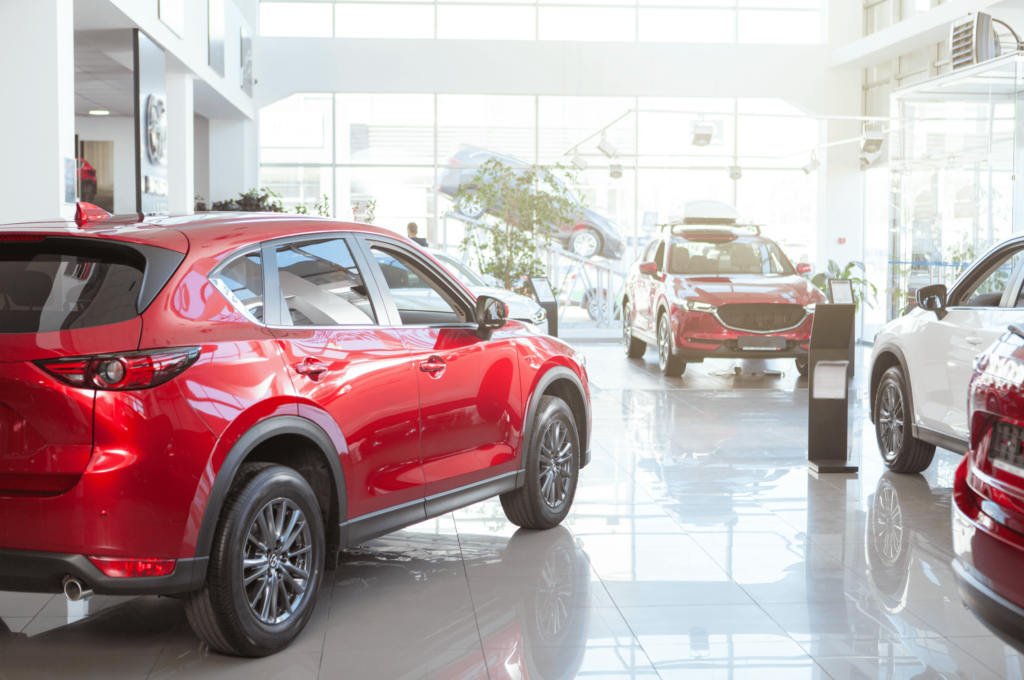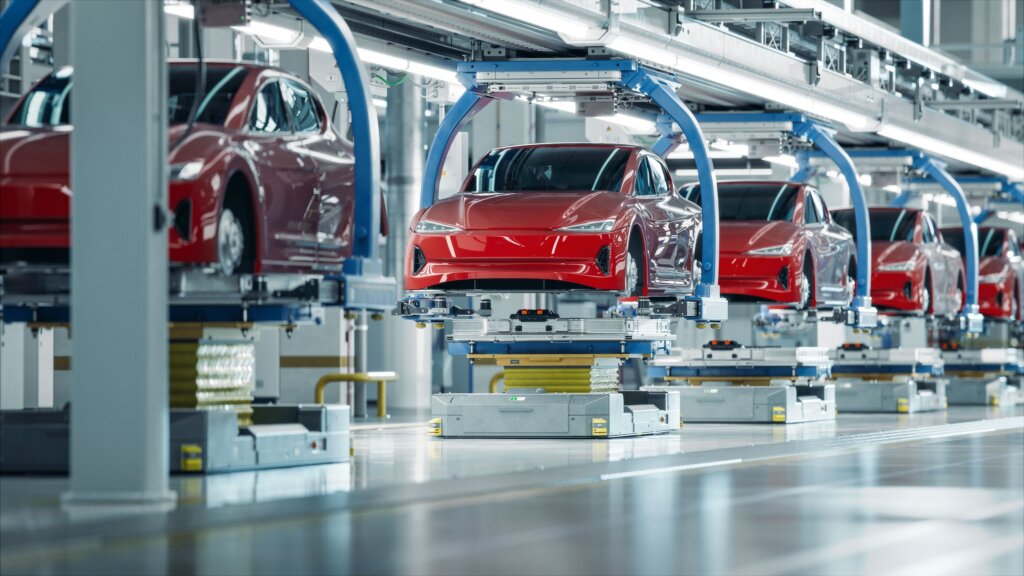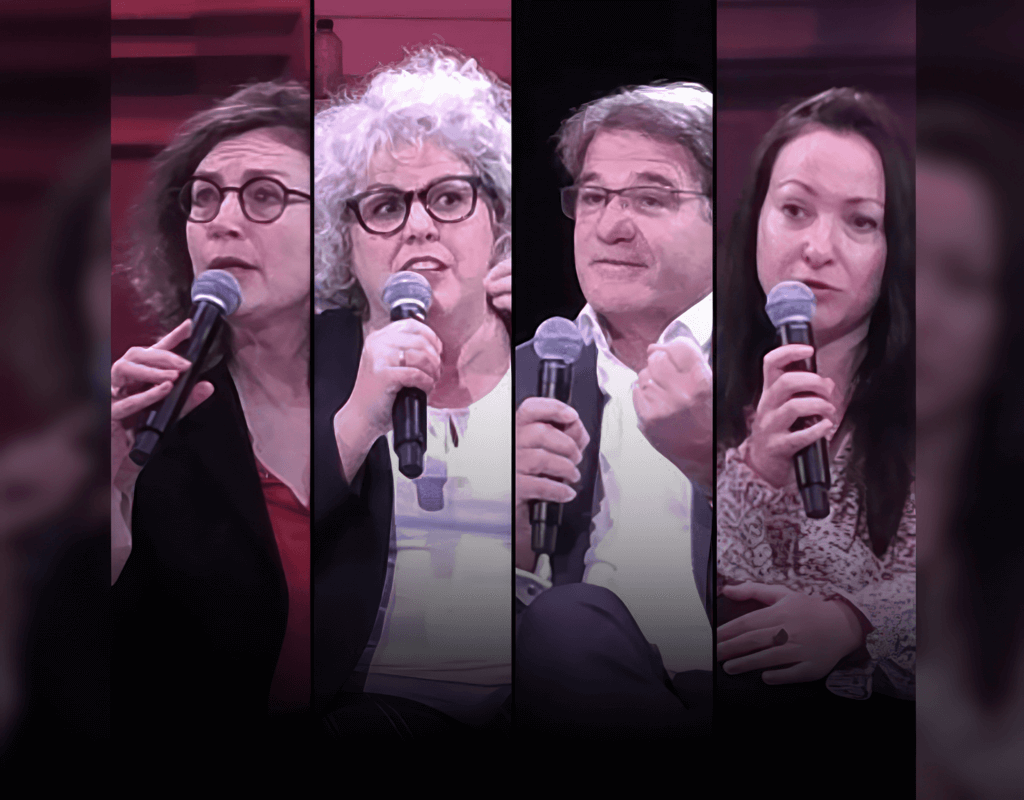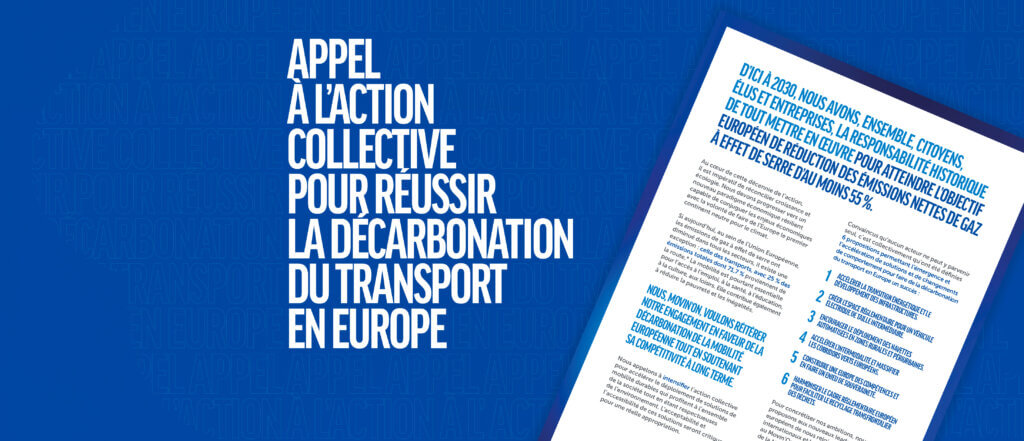Biden Bets on Africa’s Rare Minerals to Equip U.S. EVs
Funding a rail corridor to move minerals critical to the manufacture of electric vehicles from mines in landlocked African nations to the West through Angola’s Port of Lobito on the Atlantic Ocean was the center of attention as U.S. President Joe Biden and Angolan President João Lourenço co-hosted African leaders in Angola this week.
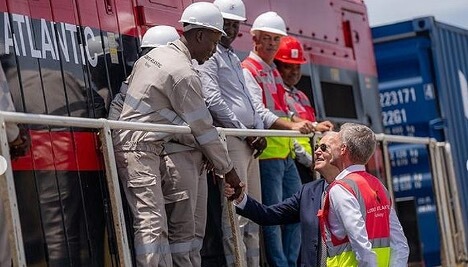
Funding a rail corridor to move minerals critical to the manufacture of electric vehicles from mines in landlocked African nations to the West through Angola’s Port of Lobito on the Atlantic Ocean was the center of attention as U.S. President Joe Biden and Angolan President João Lourenço co-hosted African leaders in Angola this week.
African leaders attending the meetings were President of the Democratic Republic of the Congo Felix Tshisekedi; President of Zambia Hakainde Hichilema; and Vice-President of Tanzania Philip Mpango.
The group celebrated and confirmed plans for more than US$530 million in new financing from the United States for the 1,300-kilometer (808 mile) Lobito Trans-Africa Corridor. This $10 billion infrastructure project incorporates rail, road, bridges, telecommunications, energy, and agribusiness developments linking the four African nations.
In the Angolan capital of Luanda on December 3, both presidents praised the warming relationship between their two nations.
“I’m very proud to be the first American president to visit Angola. And I’m deeply proud of everything we have done together to transform our partnership thus far. There’s so much ahead of us, so much we can do,” President Biden said at the Presidential Palace in Luanda, capital of Angola, the West African nation with the long Atlantic Ocean coastline.
Angolan President João Lourenço said the two countries have been exchanging ministerial, defense, and business delegation visits and, more recently, for the first time, the U.S. Defense Secretary and the Director General of the CIA paid a visit to Luanda in advance of the President Biden’s trip.
“On holding these state visits to Angola on the eve of Angola celebrating 50 years of its national independence, this will be marked in the history of the two countries as the first visit by a U.S. president touching the Angolan soil,” President Lourenço declared.
The meeting “marks an important turning point in our relations, which undoubtedly will know a new dynamic as from today,” the Angolan leader said. “We want to work together attracting U.S. direct full investment to Angola, opening business and opportunity for Angolan businessmen to the U.S. market.”
Biden described the Lobito Trans-Africa Corridor, planned to span Africa from the Atlantic to the Indian Ocean as an “ocean-to-ocean access railway that’s going to connect the continent from west to east for the first time in history.”
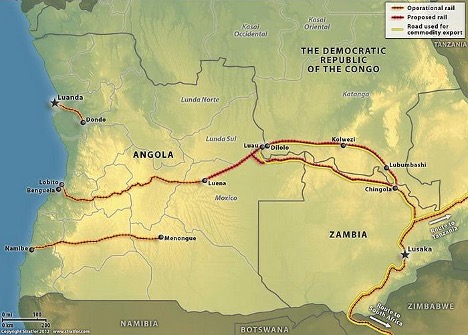
President Biden announced more than US$560 million in new funding for the project, bringing the total for U.S. investments from all sources to more than $4 billion.
This includes commitments expected to generate at least $200 million in additional private sector capital for infrastructure projects along the Corridor.
To date, the United States regional development banks, and international partners have mobilized over $6 billion in high-standard, public and private investments along the Lobito Trans-Africa Corridor.
Investments in solar energy projects are going to help “Angolans generate 75 percent of its clean energy by next year, by next year,” Biden emphasized. The funds will also go to “upgrading Internet and communications infrastructure to connect all of Angola to high-speed Internet networks. As we’re doing that at home ourselves…” President Biden said.
Analysts say this project may be well-received by U.S. President-elect Donald Trump, as it suits his transactional approach to the continent and appeals to one of Trump’s biggest backers, billionaire Elon Musk.
“The money has been earmarked already after all,” said James Murphy of Clark University in Massachusetts. “Continuing the Lobito project is a smart idea. Trump does not have to own it except in the sense that it gives him a talking point about our strategic/resource-driven interests in Africa, particularly as a strategy to acquire minerals essential for Elon’s Teslas, as it were.”
The Lobito Trans-Africa Corridor stretches from the Port of Lobito eastward across Angola and northeast into the Democratic Republic of the Congo (DRC) with its deposits of cobalt, copper, lithium, tin, and the rare earth tantalum, an elemental metal with high density and high melting point for superalloys.
The financing is now coming together for a greenfield rail link that will connect from a node in Angola all the way across landlocked Zambia, Africa’s second-largest copper producer, with the goal of reaching the Indian Ocean.
A greenfield rail link is a railway built on land that has not yet been acquired. The 780-kilometer (484 mile) greenfield rail line, known as “Zambia – Lobito Rail” or “ZLR” would connect the Lobito rail line in Luacano, near Angola’s eastern border, to the existing Zambia Railways Line at Chingola in that country’s copper belt.
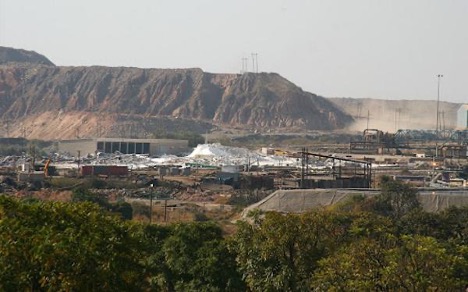
Once fully developed, ZLR will provide primary open access transportation connecting Zambia and Angola, promote investment in an underdeveloped agro-ecological zone to support global food security, and secure an open access trade route for critical minerals, while boosting intra-African trade and general economic growth.
The whole Lobito Corridor provides a much shorter route for trade from these countries into Europe and the Western Hemisphere. The Benguela Railway, part of the Lobito Corridor, is a quick foute for the transport of copper, cobalt, and manganese mined in Angola, the Democratic Republic of the Congo, and Zambia. It once took 45 days to get trade goods from eastern Congo or Zambia to market by going through Durban, South Africa by truck; with the rail corridor route, it takes only 40-50 hours, according to a senior administration official.
“That is a remarkable not only cut in time but cut in cost and the ability to get to market, which will then serve to cut the cost, eventually, of batteries and EVs or chips, et cetera,” the official said, speaking to journalists on background.
“The reason the mining industry is so important in this is because by booking capacity in this rail, it makes it more financeable, more commercial. Nothing in what is happening in the Lobito Corridor is aid. It is all about making things commercial, financeable, and for-profit so that they’re actually sustainable for a long period of time and has the ability to have maintenance on it and so on,” the official said.
For instance, the DRC has 61 active cobalt mining sites; 76 percent are mined by Chinese companies and 10 percent by the Swiss commodity trader Glencore, according to the Congolese Ministry of Mines.
To move these critical minerals to the United States and other western nations, the Lobito Trans-Africa Corridor was launched last year at the 2023 G7 Summit under the Partnership for Global Infrastructure and Investment (PGI).
At the G7 meeting, the DRC, Angola, Zambia, United States, European Union, African Development Bank, and Africa Finance Corporation signed memoranda of understanding to establish a shared vision for the Lobito Corridor. An estimate of the project’s cost is in the range of US$1 billion to $2.3 billion.
Once refurbished by China, in September 2021 the Benguela Railway was put up for a concession to operate, maintain and improve by Angola’s Ministry of Transport.
In July 2022, the concession was awarded to the Lobito Atlantic Railway company, a three-way joint venture between Trafigura, a multinational commodities company based in Singapore; Mota-Engil, a Portuguese group in civil construction, public works, port operations, waste, water, and logistics; and Vecturis, an independent rail operator. The three secured a 30-year concession to manage the railway line across Angola and into the landlocked DRC.
Transporting Zambian Minerals Westward: The Future is Here
President Biden told the African leaders the resource-rich continent of more than 1.4 billion people had been “left behind for much too long.”
“But not anymore. Africa is the future,” Biden declared.
Future U.S. plans for the Lobito Corridor emerged in August 2024 when Helaina Matza, a special coordinator for PGI at the U.S. State Department, revealed that discussions have been held on expanding the corridor into Tanzania. Matza told reporters that U.S. policy has always been regional in outlook and sought to realize a wider ranging Trans-Africa Corridor, bridging the Atlantic and Indian Oceans, rather than a set of ad hoc infrastructure projects.
Matza said the initial phase of the Lobito Corridor, which is the renovation of the railway in Angola’s Benguela Province, was progressing smoothly, with copper shipments already flowing from DR Congo to the United States for the first time.
“For the portion of the rail that we have been able to finance already the refurbishment of, connecting DRC to the Port of Lobito, we actually have seen several shipments, including the first ones of copper to Baltimore, just in the last couple of days while we’ve been on the ground. So, it’s very exciting,” Matza said.
The second and more ambitious phase would include roughly 800km (miles) of new railway, starting in Angola and building across Zambia. This plan is pending the completion of feasibility studies, she said.
The goal is to eventually connect the Atlantic Ocean to the Indian Ocean through Tanzania, Matza explained.
On Wednesday, the leaders traveled to the Port of Lobito to view the Corridor’s interface with the sea.
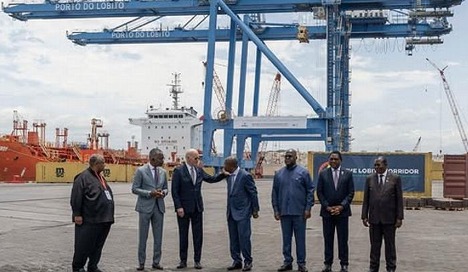
“The Lobito Port Terminal I toured today marks the start of the Lobito Trans-Africa Corridor – a bridge between the Atlantic and the Indian Ocean and a global hub for goods that families and communities rely on. It represents endless possibilities for the people of Angola and the region,” Biden enthused.
President Lourenço said that in addition to the new Corridor, Angola would like to increase cooperation with the United States in defense and security sectors, hold more joint military exercises for “maritime security in order to protect the Gulf of Guinea and South Atlantic,” as well as “modernization of the Angola Armed Forces.”
The Angolan president listed “important projects of public investment” ongoing with U.S. EXIM bank funding, City Capital, and the International Development Financial Cooperation, with U.S. companies such as Sun Afrique, Africell, Mayfair Energy, and GatesAir, amongst others, including the oil companies Chevron and Esso, who have been based in Angola for decades, as well as numerous U.S. service companies in the oil sector.
Scott Nathan, chief executive officer of the U.S. International Development Finance Corporation, accompanied President Biden on his Angolan trip. “DFC’s significant investments along the Lobito Corridor are fostering sustainable economic development and advancing key U.S. strategic interests,” Nathan said. “Our projects in Angola and across the region reflect the U.S. government’s commitment to enhancing infrastructure, promoting the free flow of commerce, and diversifying critical supply chains.”
The U.S. Government announced the commitment of a loan of up to $553 million to upgrade the Lobito Atlantic Railway. The loan will support the rehabilitation and operation of the brownfield mineral port in Lobito and an approximately 1,300-kilometer brownfield rail line in Angola running between the Lobito port to Luau on the Angolan border.
“WE’RE BUILDING RAILROAD LINES FROM ANGOLA TO ZAMBIA AND THE DRC, AND ULTIMATELY, FROM THE ATLANTIC OCEAN TO THE INDIAN OCEAN. IT’LL BE THE FIRST TRANS-CONTINENTAL RAILROAD IN AFRICA AND THE BIGGEST AMERICAN RAIL INVESTMENT OUTSIDE OF AMERICA.” – Joseph R. Biden, Jr., President of the United States
Economic Opportunities Multiply
During Biden’s visit, there were additional transactions announced that reflect the U.S. Government’s commitment to expanding values-driven economic opportunity and improving security in the region.
The Development Finance Corporation’s portfolio of investments in Angola includes more than US$700 million committed during the Biden-Harris administration. DFC is exploring a range of investment opportunities along the Lobito Corridor.
Additional transactions announced:
– A commitment to provide up to $150 million in political risk insurance for new water treatment plants to expand access to potable water to underserved communities in southern Angola.
– The commitment of a $40 million loan to Africa GreenCo Group Ltd. to help fund a portion of a liquidity facility aimed at supporting GreenCo’s energy aggregation and trading business as the first energy trader on the Southern African Power Pool.
– The commitment of a $13 million equity investment in the African Rivers Fund IV, which will support small and medium-sized businesses in frontier markets in Central and Southern Africa, including Angola, the DRC, and Zambia.
– DFC committed a $6 million USAID-supported loan portfolio guaranty for Angolan microcredit company Kixicrédito S.A. that will facilitate lending to micro, small, and medium-sized enterprises, including agricultural firms along the Lobito Trans-Africa Corridor.
– A $5 million loan to Community Markets for Conservation Limited in Zambia to expand its food processing business to support the adoption of sustainable, conservation-based practices in rural Zambia.
– The commitment of a $3.4 million technical assistance grant to Pensana to conduct feasibility studies to advance development of a rare earth mine and refining facility in Longonjo, Angola, along the Lobito Corridor.
– Separately, DFC also committed a $3.2 million DFC technical assistance grant to Chillerton in support of the development of a green copper mining project in Kakosa, Zambia, also along the Lobito Corridor.
– A retainer letter with Kabanga Nickel Limited, a subsidiary of Lifezone Metals Limited, to begin due diligence for political risk insurance on the Kabanga Nickel underground nickel-copper-cobalt mine site and the Kahama Hydromet Refinery site in Tanzania.
Africa is a priority for the Development Finance Corporation and is its largest portfolio of any region in the world, with over $13.1 billion in exposure across the continent. Last year alone, DFC committed over $3.2 billion in new financing across 72 transactions in Africa.
Oil-Rich Angola Diversifies
Tied to global oil demand, Angola’s economic fortunes have been mixed. The oil trade has brought growth but has also left the country with high levels of poverty and inequality, according to the World Bank. “The government of Angola is highly dependent on oil and diamond revenues, and its domination of the economy undermines efficiency,” the bank said in a current overview statement.
Multiplying its effects, President Biden’s visit took place on the eve of the Africa Investment Forum that held its 2024 Market Days on December 4-6 in Rabat, Morocco.
The forum is an initiative of nine African development finance institutions: the African Development Bank, Africa50, Afreximbank, the Development Bank of Southern Africa, the Islamic Development Bank, the European Investment Bank, Trade and Development Bank, the Africa Finance Corporation, and the Arab Bank for Economic Development in Africa.
At the forum, African Development Bank Group President Dr. Akinwumi Adesina cited Angola’s Lobito Corridor as, “A prime example of the collaborative partnership by the Forum’s founding partners…”
Key project partners include the African Development Bank, which committed about US$500 million, the Africa Finance Corporation, which is serving as overall project developer and the Development Bank of Southern Africa which leads the first project phase.
The corridor will create thousands of jobs and facilitate regional integration across Angola, Democratic Republic of Congo, and Zambia, Dr. Adesina said.
The United States and the European Commission are among global partners who signed a Memorandum of Understanding in October 2023 to mobilize resources for the Lobito Corridor.
Dr. Adesina reminded the forum’s over 1,000 delegates that the continent holds 90 percent of the world’s platinum, 95 percent of its chromium, and two-thirds of all cobalt.
“WITH 30 PERCEENT OF THE WORLD’S LITHIUM, AFRICA IS A KEY PART OF THE ELECTRIC VEHICLE MARKET. THIS US$7 TRILLION MARKET WILL GROW TO $59 TRILLION BY 2050. WITH STRATEGIC INVESTMENT, AFRICA CAN BECOME A GREAT ENERGY HUB FOR THE WORLD.” – Dr. Akinwumi Adesina, African Development Bank Group President
Since its inception in 2018, the Africa Investment Forum has generated $180 billion of investor interests and closed transactions worth $30 billion, he said. Spotlight on Investing in Africa disclosed that $15 billion in deals have been originated this year.
“The theme of this Africa Investment Forum is leveraging at scale. It’s about how to make things happen at scale for Africa,” Dr. Adesina said. “Africa doesn’t have time for Mickey Mouse investments, we need investment at scale.”
Countering China's Tazara Railway
Angolan railways have a troubled history. Soon after Angola gained its independence from Portugal in 1975, the Angolan Civil War broke out. The Benguela Railway was damaged and fell into disuse. Ballast cars had to be coupled to the front of locomotives to detonate mines. By 1992, only 340 km (210 miles) of the railway remained in operation. When the 99-year concession expired in 2001, only 34 km (21 miles) remained in service, along the Angolan coast from Benguela to Lobito.
After the Angolan Civil War ended in 2002, the railway was reconstructed between 2006 and 2014 by the China Railway Construction Corporation at a cost of $1.83 billion.
The rebuilt Benguela Railway was inaugurated in February 2015. On March 5, 2018, ore transport was restarted from the Tenke Fungurume Mine in the DRC, where copper and cobalt are extracted, and the cargo transported to the Port of Lobito. The railway then went into full operation, connecting the city of Tenke to the city of Lobito.
China signed an agreement in early September 2024 to refurbish a separate railway that will enable Zambia to export the critical minerals eastward through Tanzania’s Indian Ocean Port of Dar es Salaam.
This line links Zambia’s mines with Tanzania’s main port on Africa’s east coast. It will export copper to China, the world’s biggest consumer of this metal for use in electric vehicles.
Developing this strategic export route for critical minerals from Zambia and the DRC is partly a response from China to the financial support from the United States for the Lobito Trans-Africa Corridor.
This latest development in a U.S.-China competition for influence, the competition has resulted in a regional rail revival.
The Chinese government has moved quickly since Zambia requested help in refurbishing the line. State-owned China Civil Engineering Construction Corp sent its experts in December 2023 to inspect the railway. Three months later, China’s ambassador to Zambia officially handed over the proposal to spend more than US$1 billion through a public-private partnership to revitalize the Tazara railway line connecting Zambia’s copper belt region with the Tanzanian port of Dar es Salaam under its Belt and Road Initiative.
The next major business meeting on these matters is scheduled for June 2025, when Angola’s capital of Luanda will host the U.S.-Africa Business Summit as Angola celebrates the 50th anniversary of its national independence and assumes the Chairmanship of the African Union. The gathering is for politicians, entrepreneurs, scholars, and civil society from the U.S. and Africa to meet in plenary sessions, panel discussions, investment pitch sessions, and networking opportunities to discuss business, history, culture, and supplying critical minerals for electric cars and trucks.
Sources: Statements from: Joe Biden, João Lourenço, James Murphy, Dr. Akinwumi Adesina, Helaina Matza, Scott Nathan, with additional material from: the White House, U.S. State Dept., World Bank, the African Development Bank, Reuters, Bloomberg, Invest Lobito Corridor, South China Morning Post, G7, China Daily, International Railway Journal
Tags: mining, railway, rail, Angola, Zambia, Democratic Republic of the Congo, Tanzania, China, copper, cobalt, tin, rare earths, minerals, electric cars, EVs, logistics, Joe Biden, João Lourenço, Akinwumi Adesina, Lobito Trans-Africa Corridor, Port of Lobito, African Development Bank, White House, U.S.-Africa Business Summit
By Sunny Lewis, journalist, founder of Environment News Service (ENS) at: ens-newswire.com, and expert in the field of sustainable mobility in the United States and around the Pacific Rim.
All Movin'On news
in your mailbox
Auteur
Share
Tweets de @movinonconnect
Movin'On 2035 TODAY EP02 - Circular Economy & Competitivity
Movin’On 2035 TODAY EP01 – Fair Mobility for All https://x.com/i/broadcasts/1yNxagBrWZbGj
✨ THAT'S A WRAP!
Movin'On Summit 2024 has just concluded in Brussels!
More than 350 leaders and experts in sustainable mobility gathered to exchange ideas, collaborate, and share their vision for desirable and decarbonised mobility in Europe. Together, we explored ways to build…
🔴 Live from #MovinOnSummit2024
@AshaSumputh has just invited Denis Machuel, CEO at @AdeccoGroup and Florent Menegaux, President of the @Michelin Group & President of Movin'On
Sustainable mobility news
Discover the latest trends, analyses per theme, and our next meetings.


